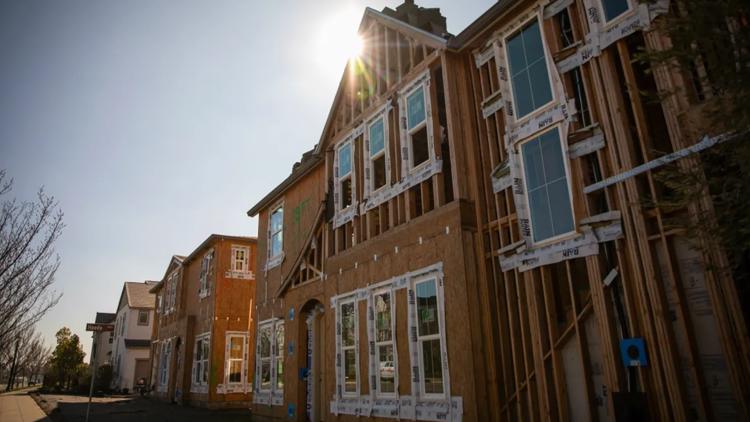CALIFORNIA, USA — This story was originally published by CalMatters.
Homeownership has long been considered a path to the middle class. But just 17% of Black and Latino households could afford a median-priced home in California last year, down from the prior two years, according to a new report.
All Californians faced a high-barrier market in 2021. Only 26% of California households earned the minimum annual income of $144,400 needed to afford the monthly payments of a home priced at $786,750, the report by the California Association of Realtors said. That was down from 28% in 2020 and 30% in 2019.
The median home price is the point at which half the homes in the state are sold for more and half for less. In an ideal market, half of Californians would be able to afford a median-priced home, said Oscar Wei, deputy chief economist at the Realtors group.
Thirty-four percent of white households in the state could afford a median priced home, down from 38% in 2020. And 40% of Asian homebuyers could afford the median-priced home last year down from 43% in 2020.
Such racial inequities are likely to grow in 2022 if interest rates continue their expected upward climb, even as the labor market has driven wages higher for many workers, said Wei, the economist.
“When you see interest rates rising — and mortgage payments rising faster than income — that means affordability overall should decline in 2022,” Wei said. “The housing affordability gap between ethnic groups … could widen.”
California’s Black and Latino families earned median incomes less than those of the state’s white and Asian families. And higher housing prices would likely make it harder for Black and Latino families to save for down payments, Wei said.
The pandemic pushed California home prices into overdrive last year, spurring demand for single-family homes as families sought more space and were able to move further away from their places of employment given the rise of remote work. In Southern California, for instance, the million-dollar home became ubiquitous in a growing number of neighborhoods, an analysis by The Los Angeles Times found.
Wei, of the Realtors group, said he believed Black and Latino families may have moved to more affordable parts of the state during the pandemic in comparison to other ethnic groups. This movement could result in further segregation in the state, particularly in the state’s more expensive counties, he added.
Nikki A. Beasley, the executive director of Richmond Neighborhood Housing Services, an affordable housing organization that helps first-time buyers, said her organization has helped many people in the organization’s hometown of Richmond, as well as throughout the greater Bay Area. Qualifying for a mortgage in recent years has not been as big of a barrier as has the low availability of homes for sale, she said.
The nonprofit is itself a property manager, advocate and urban developer currently working on a West Oakland project of nine, single-family homes with accessory dwelling units, she said. They also are working to acquire and rehabilitate dormant or blighted properties around the Bay Area to be converted into homes for people, Beasley said, and they are partnering with the Realtors on a program that provides up to $10,000 toward closing costs for low and moderate income first-time homebuyers.
Sacramento lawmakers and advocates have sought to boost the homeownership rate for Black Californians. Across the state, several programs seek to increase homeownership through downpayment assistance. The largest program is overseen by the California Housing Finance Agency, which provides as much as $11,000 of down payment assistance to qualifying first-time homebuyers.
Last year, Senate Democrats proposed a “California Dream for All” plan in which the state might pay up to 45% of the purchasing price of a home. The state treasurer is studying the proposal and is expected to report back to the legislature with more details.
Beasley, the director of the Richmond-based organization, works with many Black families. She tells them homeownership is possible, even in a frenzied Bay Area market.
“There is affordability in the Bay Area, you just have to make a decision of where you want to live,” Beasley said. “You may have to get innovative and creative: Maybe you look for a fixer-upper.”
Assistance programs can only do so much to counterbalance a broader economic system that has left Black families and other communities of color on an unequal footing, she said. That’s why her organization promotes models outside of the traditional mortgage market, she said, including community and cooperative ownership models, as well as community land trust options.
When it comes to California home prices, Black families often face challenges including large student debt loads and pay discrimination, Beasley said. Possible solutions include student loan forgiveness and pay equity.
“The reality with a mortgage, or with financing, is you have to have income, you have to be able to manage your debt, and the only way you can combat that is either make more money or reduce debt,” she said. “So either get more people of color higher-paying jobs, or figure out how to mitigate some of this debt.”



